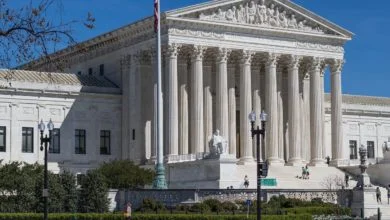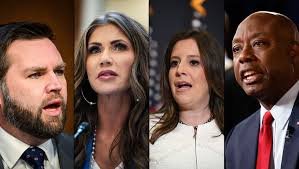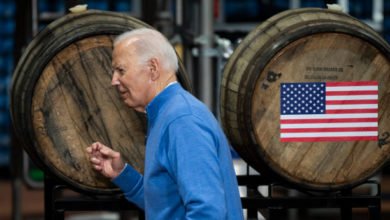Why Indiana’s ‘Red Flag’ Law Failed to Stop the FedEx Shooting
Last week 19-year-old Brandon Hole did the unthinkable. He stormed into an Indianapolis FedEx facility with a Ruger AR-556 semi-automatic rifle and killed eight people.
He then took his own life.
CNN recently pointed out that Indiana is one of several US states that have so-called “red flag” laws—also known as Extreme Risk Protection Orders—that allow courts to seize firearms from individuals suspected of being a danger to themselves or others. Furthermore, it was revealed that Hole, who was interviewed by the FBI last year, was allowed to purchase a firearm months after being served with an Extreme Risk Protection Order.
“[Hole’s] mother told law enforcement in March 2020 that her son told her he would attempt ‘suicide by cop,’” CNN reported. “At the time, officials took a shotgun found at his home into custody, Marion County prosecutor Ryan Mears said Monday. And yet, later that year, Hole was able to legally purchase assault rifles.”
The revelation cast a shadow over Indiana’s red flag law, a policy that lawmakers have argued is essential to stopping mass shootings.
What When Wrong?
The failure of Indiana’s gun law to prevent the FedEx shooting “shows the limits” of the state’s red flag, Marion County prosecutor Ryan Mears told CNN.
In the Hoosier State, people who have their firearms seized are not automatically designated as violent or mentally unstable. Instead, the state has two weeks to file a petition requesting the court to designate the offender mentally unsound or violent. In Hole’s case, the firearm had been secured and the family made no effort to reclaim the weapon, so prosecutors determined they had “achieved” the law’s objective.
The seizure of the weapon did not stop the crime, however. And the failure highlights two reasons I’ve argued Americans should be wary of red flag laws. For starters, there is little evidence to support the claim that red flag laws reduce gun violence.
“The evidence,” The New York Times reported in 2019, “for whether extreme risk protection orders work to prevent gun violence is inconclusive, according to a study by the RAND Corporation on the effectiveness of gun safety measures.”
There’s a reason for this. As Indiana’s law shows, red flags are complicated. In many cases, the laws appear to be more about providing political window dressing than reducing gun crime.
Red flag laws are essentially a form of “pre-crime,” a theme explored in Philip K. Dick’s sci-fi novella The Minority Report
For example, California’s red flag went effectively unused for years after its passage in 2016, The Washington Post reported. Washington, D.C.’s law went entirely unused, the Post said. Meanwhile, states such as Maryland and Florida have seized hundreds of firearms—yet it’s unclear if these confiscations actually stopped a shooting.
This leads to my second point. Red flag laws are essentially a form of “pre-crime,” a theme explored in Philip K. Dick’s sci-fi novella The Minority Report (which Steven Spielberg adapted into a pretty great movie in 2002).
In the book, police exploit precognitive powers to stop crimes before they happen. In the real world, of course, authorities do not have the power of precogs to help them fight crime, yet that has not stopped them from trying—even though Dick’s story explores the serious ethical problems of using the law against people who have not committed any crime (but might!).
We Just Need Better Red Flag Laws?
Some argue that Indiana’s red flag failure isn’t evidence that red flag laws don’t work, it’s simply evidence that this particular law didn’t have enough teeth.
“In Indiana, they have the red flag law … but they don’t have the mechanism to make it difficult to get out and get more guns,” Michael Lawlor, a professor at the University of New Haven, told CNN.
Lawlor, who in 1999 helped write Connecticut’s red flag law—the first in the United States—as a member of the state legislature, said it should have been a “no-brainer” in Connecticut to prevent a person like Hole from purchasing a firearm.
In other words, we simply need a more effective bureaucracy. This is, of course, a perennial rejoinder from those who believe the state would run smoothly if only the proper managers were executing the plan. But as the economist Ludwig von Mises has observed, this is a fantasy.
“It is a widespread illusion that the efficiency of government bureaus could be improved by management engineers and their methods of scientific management,” Mises noted in Bureaucracy. “What they call deficiencies and faults of the management of administrative agencies are necessary properties.”
In other words, per Mises, these types of inefficiencies and dysfunction are inherent in bureaucracies, which lack the incentive structure that makes markets so efficient.
“A bureau is not a profit-seeking enterprise; it cannot make use of any economic calculation, Mises wrote. “It is out of the question to improve its management by reshaping it according to the pattern of private business.”
The Bottom Line
Mises’s point is actually driven home by CNN. The network points out there have been numerous instances of red flag laws failing in precisely the manner seen in Indiana, including in November 2018, when a gunman killed 12 people and injured more than a dozen more at a bar in California not long after he was visited by law enforcement authorities for erratic behavior. Authorities could have easily executed a red flag law, but they did not.
Still, for the sake of argument, let’s say the system does work and a would-be shooter is denied a firearm purchase. What is to prevent that person from simply obtaining a firearm on the black market?
It’s difficult to fathom that a person determined enough to kill strangers in cold blood will be deterred after being denied a firearm purchase at the local gun store.
The reality is that black markets do exist. And an abundance of research shows that the vast majority of the people committing gun crimes are not lawful gun owners. One University of Pittsburgh study, for example, found that lawful gun owners accounted for just 18 percent of gun violence.
“The top-line finding of the study — that the overwhelming majority of gun crimes aren’t committed by lawful gun owners — reinforces a common refrain among gun rights advocacy groups,” The Washington Post said of the study. “They argue that since criminals don’t follow laws, new regulations on gun ownership would only serve to burden lawful owners while doing little to combat crime.”
It’s difficult to fathom that a person determined enough to kill strangers in cold blood will be deterred after being denied a firearm purchase at the local gun store.
The bottom line is that Brandon Hole was a deeply disturbed person whose bizarre interests and behavior reportedly included an obsession with “Bronies,’ a subculture of the internet for male fans of My Little Pony.
His life ended tragically and claimed the lives of others in an even more tragic fashion. But to think that his crime could have been prevented if only the bureaucratic system had worked more efficiently defies reason and empirical evidence.
Moreover, if we convince ourselves that bureaucracy can truly prevent crimes before they happen if we only push a little harder against civil liberties, we don’t just delude ourselves.
We may end up creating a world that’s even more terrifying than Philip Dick’s dystopian vision.
This article was originally published on FEE.org




